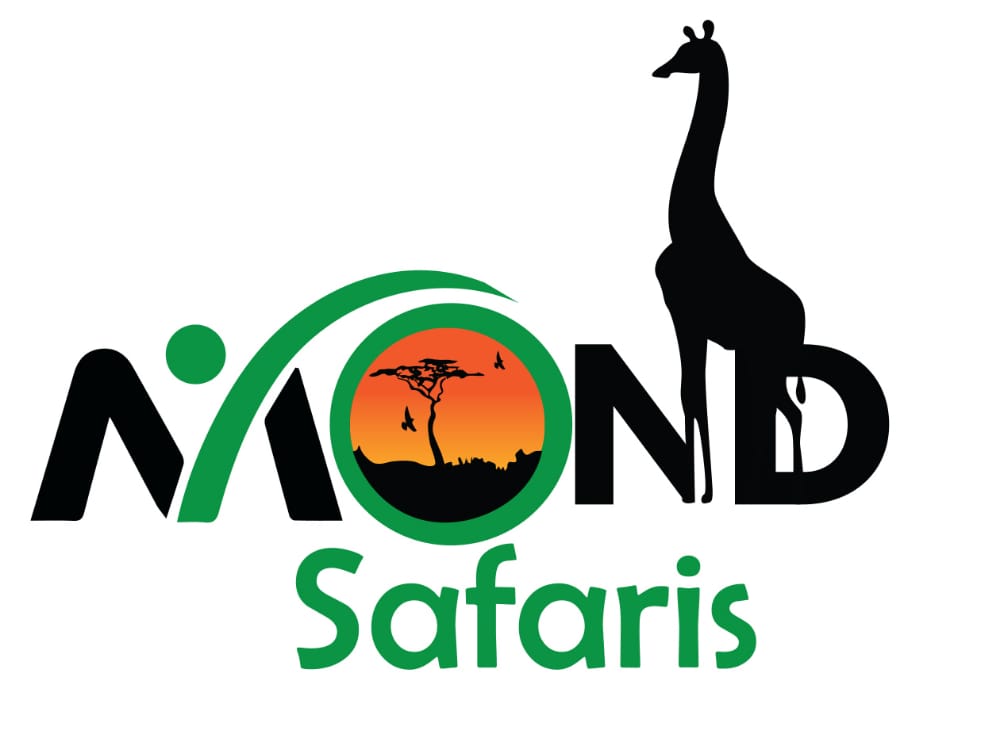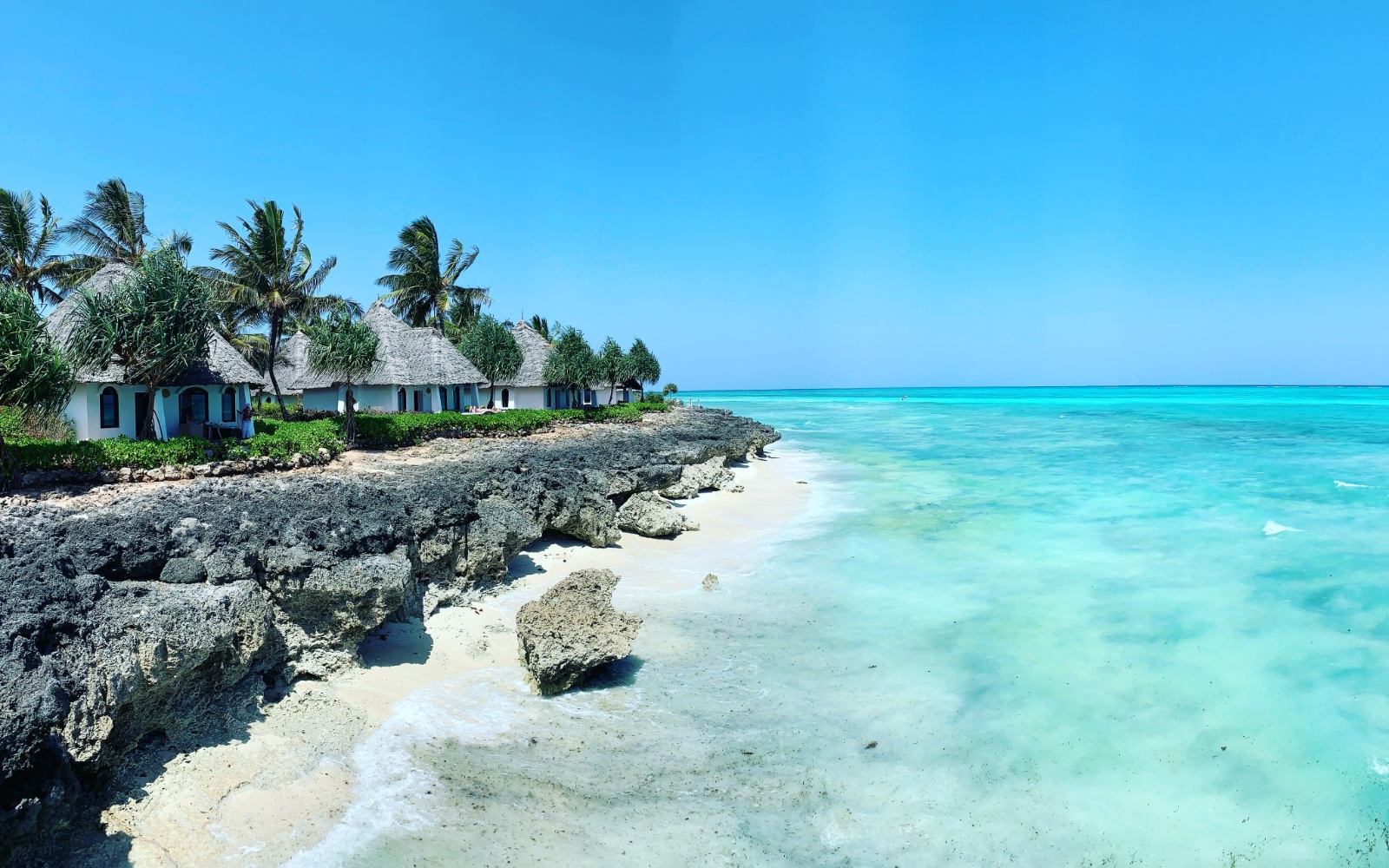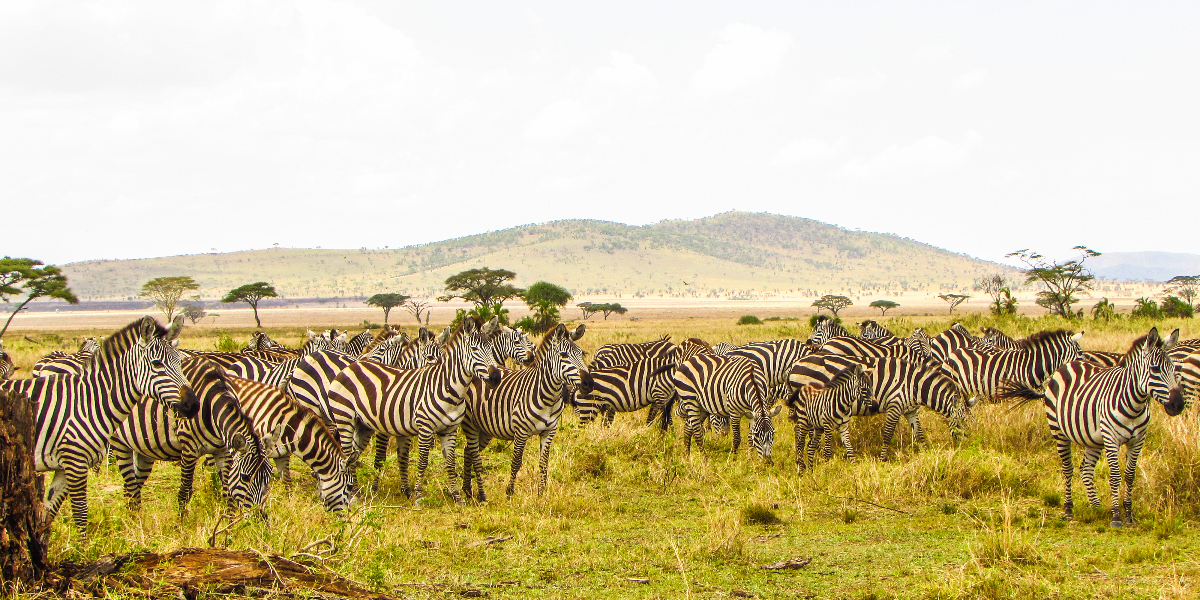Embark on an African adventure like never before as we unveil the top 7 best…

Chimpanzee facts and trek in Uganda
Chimpanzee facts and trek in Uganda
Chimpanzee facts- Chimpanzees and Human beings are close relatives that share the same DNA of 98 percent. Uganda harbors over 5000 of these chimpanzee primates which are found in different destinations that is National Parks and wildlife reserves.
Where to trek chimpanzees in Uganda
1.Kibale Forest National Park.
Kibale Forest National Park contains the highest number of Chimpanzee and best place spot during chimps trekking, located outside the colonial town of Fort Portal, is a dense tropical rainforest where you can track chimpanzees and 12 other primates, including red-tailed monkeys, olive baboons and the rare Ugandan red colobus.
Kibale is the premier site for chimpanzee trekking in Uganda, A typical chimpanzee trek in Kibale Forest will see you travel in a group of six plus guides (the total number of permits per day is restricted), heading into the forest either in the early morning or afternoon. Chimpanzee treks are generally shorter than gorilla treks as it’s easier to reach the chimpanzee families. Expect to spend more time looking up at the trees as chimpanzees swing through the rainforest, calling out to each other and thumping tree branches, while your knowledgeable guides explain how the chimpanzees interact and keep you safe.
2. Budongo Forest near Murchison falls National Park.
Located in western Uganda around a four hour drive from Kampala lies Budongo Forest. Home to six habituated chimpanzee groups totaling around 700 primates in total, Budongo offers chimpanzee treks year round.
The forest is an attraction in itself, owing to its huge mahogany trees and incredible biodiversity, with blue monkeys, red-tailed monkeys and olive baboons all viewable on a trek. Its location — an easy stop-off point on the road from Kampala to Murchison Falls National Park — makes Budongo a popular place for chimpanzee trekking, although its smaller population of primates means your less likely to see the animals than in Kibale.
3. Kyambura Gorge, Queen Elizabeth National Park.
A third option for tracking chimpanzees in Uganda exists in Kyambura Gorge, In the far eastern corner of Queen Elizabeth National Park. Known as the “Valley of Apes”, the gorge’s rich biodiversity comes from the draining of the Kyambura river which left a deep (100m) channel in the landscape. Home to a small family of 16 chimpanzees, this is a chimp trek for those already looking to visit one of Uganda’s most popular national parks.
A hike through the gorge gives you the opportunity to see habituated chimpanzees and other types of primates including red-tailed monkeys, black-and-white colobus, baboons and Vervet monkeys.
4. Ngamba Island Chimpanzee Sanctuary
Ngamba Island Chimpanzee Sanctuary, located in the middle of Lake Victoria in Uganda’s south, is home to 49 orphaned chimpanzees.
Visitors to the sanctuary can see and feed the chimps, learning more about how the sanctuary cares for its chimpanzees.
Besides chimpanzees, Ngamba has monitor lizards, birds and beautiful neighboring islands where you will interact with locals in their fishing villages.
![]()
Social behavior:
Chimpanzee facts- Chimpanzees are socially flexible primates that live in groups of 30- 80 individuals of males, females and young ones with the life span of 50 in the wild and 60 years under captivity. They live in fission- fusion social groups and can leave or join with unlimited freedom. They spend most of their time in small temporary groups known as parties but at times also associate with bigger groups known as communities.
Chimpanzees are one of the few animals that use tools, these include sticks to retrieve termites from their from their mounds, stones to open up appetizing nut contents and leaf- sponges to soak up drinking water.
The chimpanzee brains are more advanced compared to other animals in the wild. Some chimpanzees have been intelligent enough to learn sign language by the help of human specialists. Their ability to use tools is an obvious sign of their intelligence as well.
Chimpanzees make around 30 vocals to share how they feel. The most common and loudest is pant-hoot a long- distance call used for a variety of social reasons, its normally sounded by an adult chimp especially during an excitement and particularly keeping in touch with other troop members.
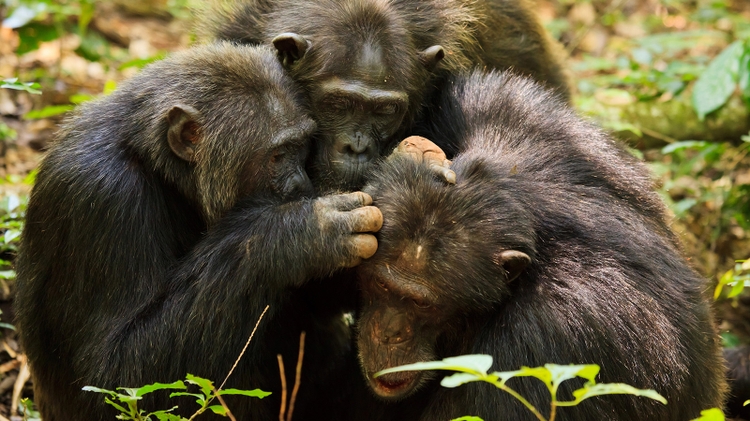
Natural Habitat:
Chimpanzees mostly inhabit in forests including savannah woodland and low land forests.
Some chimpanzees have adopted arid areas like Senegal and Tanzania in savannas, swamp forests and open forests. Basing on their diet, forests contain perfect shelter and food for chimpanzees.
Kibale forest National Park in Uganda inhabits the largest number of chimpanzees and is the most popular for chimpanzee trekking. Other areas include Ngamba island, Queen Elizabeth National Park, Murchison falls amongst others.
Reproduction:
Chimpanzee facts and trek in Uganda: Female chimpanzees reach the sexual maturity stage at the age of 10 to 12 years. They engage in sexual practices not just for reproduction but also for social unity. Unlike humans, these female chimpanzees exhibit large pink swellings around the anogenital region as an alerting sign to the males that she is ready to mate.
Although not seasonal breeders females do have an oestrous cycle, and the number of oestrous females in a group at any one time can vary by season. The gestation period of chimpanzees lasts 8months and they mostly give birth to one infant. This infant clings tightly to its mother’s fur for its first 30days and then take rides on her back until like two years of age.

What do chimpanzees eat
Chimpanzee facts and trek in Uganda: Chimpanzees are omnivores but they mostly eat fruits than any thing. They also eat Insects like aunts, honey, birds, eggs and meat, though most of their diet comes from bits of plants like seeds, leaves, roots and more. Chimpanzees are primarily vegetarians.
Chimpanzees have also been documented for hunting smaller primates like monkeys and also other animals like antelopes, wild pig and more for meat. However, meat contributes like 2% of their diet and their average diet is plants and fruits.
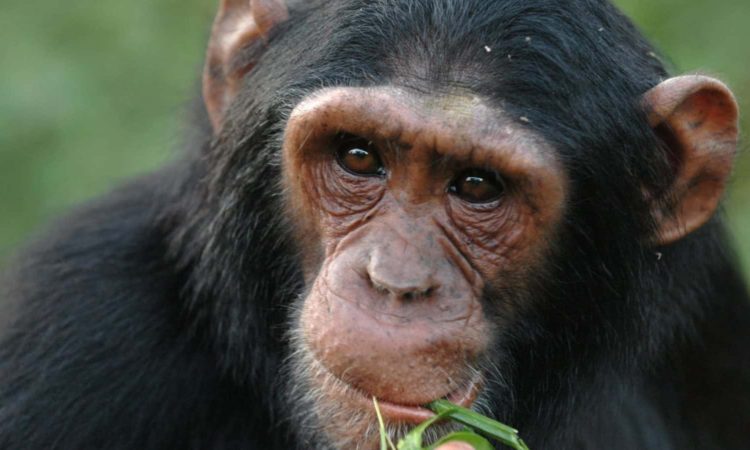
Physical appearance
Chimpanzee facts and trek in Uganda: Chimpanzees have a height of about 1.7 meters. They have longer hands than their legs and get around by climbing and swinging through trees. Chimpanzees can also walk on soles of their feet and knuckles of their long hands but an also walk upright on two feet if they want to.
The skin on the face of chimpanzees, ears, palms, and soles of the feet is bare, and the rest of the body is covered with brown to black hair.
Chimpanzee life span
Chimpanzees will live up to 60 years but the oldest chimp in the wild was estimated to have lived up to 63 years when she died.
This long lifespan is however affected by factors like the availability of good habitat with food and low predation. Human encroachment on land is the biggest threat for chimpanzees. It inhabits a productive, healthy forest with low levels of human disturbance, so it might be a more accurate reflection of natural chimpanzee lifespan.
Strength of chimpanzees
Chimpanzees are enormously strong, estimated to be around four times stronger than a human of a similar size. They can reach speeds of 25mph (40kph) when running, and that’s not even what they’re built for.
Their arms are designed to swing them through the trees, and they have a much higher proportion of fast-twitch muscle fibers, which seems to be what gives chimpanzees their extraordinary strength.
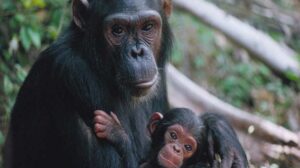
Classification of chimpanzees
Chimpanzees are categorized under the four great apes. These include the Gorillas, Bonobo (dwarf or pygmy chimpanzee), Orangutans (translation – man of the forest) and Chimpanzees. These great apes are closely related to humans and it is scientifically said that humans and the four great apes descended from a single species, and evolved to meet their survival needs.
The scientific name of Chimpanzee is ‘Pan troglodytes’ classified under the Hominidae family. This is due to the lack of tails and shorter spine – that is built for standing and sitting in upright positions much like us humans do.
Cost of chimpanzee trekking permit in Uganda
All travelers interested in chimps trek should know that one requires to have a chimpanzee permit and the price the of chimpanzee trekking permit varies depending on the place where you are going to trek from, for example in Kibale national park as of now year 2022 the permit costs $200 for foreign non Residents, $150 for foreign Residents and ugx150000 for East African citizens.
-In Kyambura Gorge, Queen Elizabeth National Park. 50 USD for foreigners and resident foreigners. 30,000 UGX East African Community Residents.
-Kalinzu Forest Reserve. 50 USD. You can book in-person on site or you can contact mond safaris
-Budongo Forest. 120 USD / 130 USD.
-Ngamba Island. From $73 USD per person. Pricing varies depending on group size .
we would recommend using a trusted tour operator like Mond safaris and will find availability of chimpanzee permits on the particular dates and if there is availability, Then you will be informed to process the payment for permits.
Chimpanzee trekking in Uganda age limit
The chimpanzee trekking age limit in Uganda is 12 years based on the rules and regulations governing the activity of chimpanzee trekking in Uganda. Only 12 years and above can trek chimpanzee.
How do chimpanzees communicate
They are among the noisiest primates and use facial expressions, body language to communicate with each other using sounds like hooting, screaming, grunting, drumming and others.
What to wear on chimpanzee trekking
You should dress in a covering clothes such as long-sleeved shirts or blouse and trouser. we recommend this dressing code Since most forests like Kibale national park is a thick tropical forest and some sections are covered with thick undergrowth. Therefore, you do not want scratch yourself because the grass and other forest insects bit you during the chimpanzee trekking.
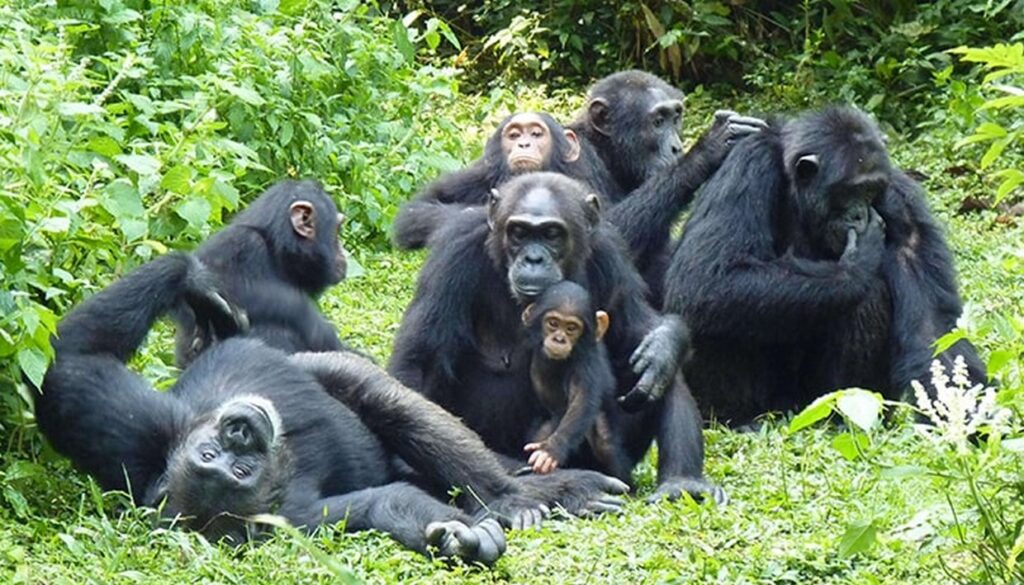
Best time to go for chimpanzee trekking
Chimpanzee trekking in Uganda can be done anytime throughout the year though the best period is during the dry season in months of June to September and December to February. There is less rainfall during dry season and due to the fact that chimpanzee trekking is done in jungle the trekking trails will be dry and passable compared to wet season.
Duration of chimpanzee trekking
Chimpanzee trekking is one of the most popular wildlife activities in Uganda, It allows you to step into the world of chimpanzees in the wild. Uganda Wildlife Authority Interpretive Rangers lead a small group (6 – 8) into the realm of the chimps. The trek takes about three hours and include a maximum of one hour with the chimps, during which you can expect to see them from a safe but intimate distance of 8-10 meters. Get up close and personal with the chimpanzees and discover their beauty, intelligence, and social structures.
Is chimpanzee trekking safe in Uganda
Yes, it is safe because there are chimpanzee trekking rules and regulations that are the laws put in place to govern the activity and ensure the safety of both tourist and primates. The chimpanzee trekking rules and regulations are put in place in order to give a delightful experience and also to help natural environment to stay with authenticity. The rules are stipulated by the Uganda Wildlife Authority.
Get more Chimpanzee facts and trek in Uganda with Mond safaris
